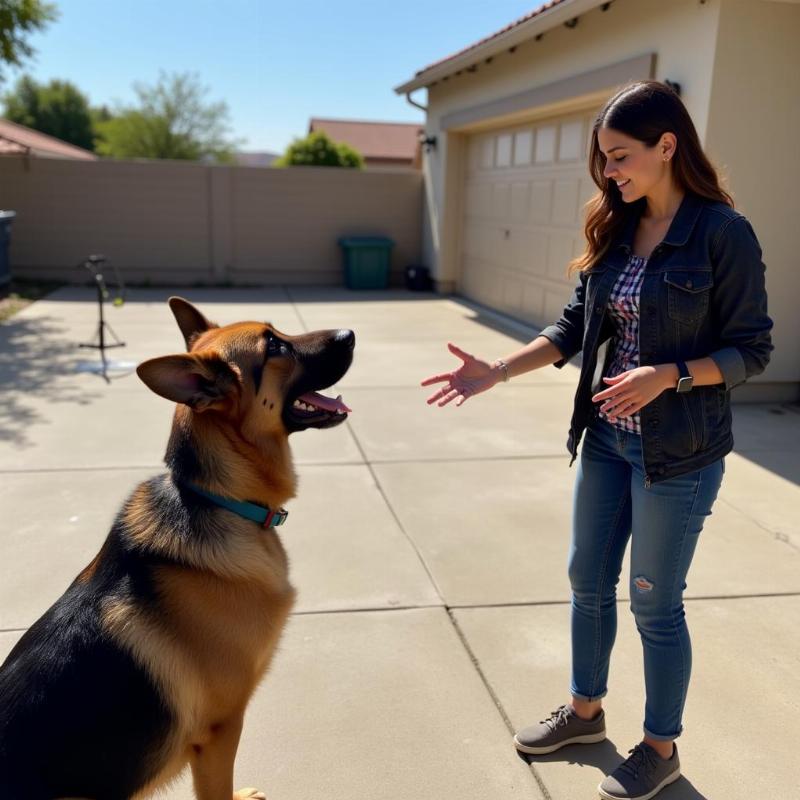Learning dog commands in other languages can be a fun and enriching experience for both you and your furry friend. It can also be incredibly useful when traveling internationally with your dog or simply wanting to impress your friends with your multilingual pup. Whether you’re looking to teach your dog basic obedience commands or expand their vocabulary with some fun tricks, exploring dog commands in other languages opens up a whole new world of communication and connection.
Why Teach Your Dog Commands in Other Languages?
Aside from the novelty and fun factor, teaching your dog commands in a different language can actually have several benefits. First, it can help to prevent confusion if you’re around other dog owners who use the same commands in English. Imagine being at the dog park and calling “Sit!” only to have half a dozen dogs plop down! Using a less common language can help your dog differentiate your commands from others. Secondly, learning new commands can be a mentally stimulating activity for your dog, keeping them engaged and sharp. Finally, it’s a great way to connect with your dog on a deeper level and build a stronger bond.
Basic Commands in Popular Languages
Here’s a look at some common dog commands translated into a few popular languages:
- Sit:
- French: Assis
- Spanish: Siéntate
- German: Sitz
- Italian: Seduto
- Stay:
- French: Reste
- Spanish: Quedate
- German: Bleib
- Italian: Fermo
- Come:
- French: Viens
- Spanish: Ven
- German: Komm
- Italian: Vieni
- Down:
- French: Couché
- Spanish: Abajo
- German: Platz
- Italian: Giù
- Leave it:
- French: Laisse
- Spanish: Deja
- German: Lass es
- Italian: Lascia
Tips for Teaching Multilingual Commands
Teaching your dog commands in another language is much the same as teaching them in English. Consistency and positive reinforcement are key. Start with one command at a time and pair the new word with the English command initially. For example, say “Sit, Assis” while luring your dog into a sit position with a treat. Gradually phase out the English command as your dog begins to associate the new word with the desired behavior. Keep training sessions short, fun, and rewarding, and celebrate even the smallest successes.
 Training a dog with multilingual commands
Training a dog with multilingual commands
Beyond Basic Obedience: Fun Tricks and Phrases
Once your dog has mastered the basic commands, why not have some fun with it? Teach them tricks like “Shake” (paw) or “Roll over” in different languages. You can even teach them simple phrases like “Good dog” (French: Bon chien; Spanish: Buen perro) or “I love you” (French: Je t’aime; Spanish: Te amo). The possibilities are endless!
What if My Dog Already Knows English Commands?
Don’t worry if your dog is already accustomed to English commands. They can still learn new words in other languages! Just be patient and consistent, and remember to keep it fun. Think of it like learning a second language yourself – it takes time and practice. Your dog might initially be confused, but with positive reinforcement and repetition, they’ll catch on.
Conclusion
Teaching your dog commands in other languages can be a rewarding experience for both of you. It provides mental stimulation for your dog, strengthens your bond, and can even be useful in various situations. So, why not give it a try? You might be surprised at how quickly your furry friend picks up a new language!
FAQ
-
Is it confusing for a dog to learn commands in multiple languages? Not necessarily. Just like humans, dogs can learn multiple languages. Consistency and clear association are key to their success.
-
What’s the best way to start teaching multilingual commands? Begin with one command at a time. Pair the new word with the English equivalent initially, then gradually phase out the English word.
-
Can older dogs learn new commands in different languages? Absolutely! While puppies may learn faster, older dogs can also learn new tricks and commands with patience and positive reinforcement.
-
Are there any resources available to help me learn dog commands in other languages? Yes! Online dictionaries, language learning apps, and even YouTube videos can be helpful resources.
-
What if my dog doesn’t seem to be picking up the new commands? Don’t get discouraged. Be patient, consistent, and make the training sessions fun and rewarding. If you’re struggling, consider consulting a professional dog trainer.
Beautdogs.us is your premier online resource for all things dog-related in the USA. We provide expert advice on dog breeds, care, and products, catering to both new and experienced dog owners. Our mission is to empower you with the knowledge and resources you need to provide the best possible care for your beloved canine companion. For expert advice and top-quality products tailored to the needs of your furry friend, contact us at [email protected] or call us at +1 501-555-7529. Beautdogs.us is your trusted source for everything dog!